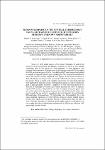Random sampling of the Central European bat fauna reveals the existence of numerous hitherto unknown adenoviruses
Vidovszky, Márton Z.
Kohl, Claudia
Boldogh, Sándor
Görföl, Tamás
Wibbelt, Gudrun
Kurth, Andreas
Harrach, Balázs
From over 1250 extant species of the order Chiroptera, 25 and 28 are known to occur in Germany and Hungary, respectively. Close to 350 samples originating from 28 bat species (17 from Germany, 27 from Hungary) were screened for the presence of adenoviruses (AdVs) using a nested PCR that targets the DNA polymerase gene of AdVs. An additional PCR was designed and applied to amplify a fragment from the gene encoding the IVa2 protein of mastadenoviruses. All German samples originated from organs of bats found moribund or dead. The Hungarian samples were excrements collected from colonies of known bat species, throat or rectal swab samples, taken from live individuals that had been captured for faunistic surveys and migration studies, as well as internal organs of dead specimens. Overall, 51 samples (14.73%) were found positive. We detected 28 seemingly novel and six previously described bat AdVs by sequencing the PCR products. The positivity rate was the highest among the guano samples of bat colonies. In phylogeny reconstructions, the AdVs detected in bats clustered roughly, but not perfectly, according to the hosts’ families (Vespertilionidae, Rhinolophidae, Hipposideridae, Phyllostomidae and Pteropodidae). In a few cases, identical sequences were derived from animals of closely related species. On the other hand, some bat species proved to harbour more than one type of AdV. The high prevalence of infection and the large number of chiropteran species worldwide make us hypothesise that hundreds of different yet unknown AdV types might circulate in bats.
Dateien zu dieser Publikation
Keine Lizenzangabe

